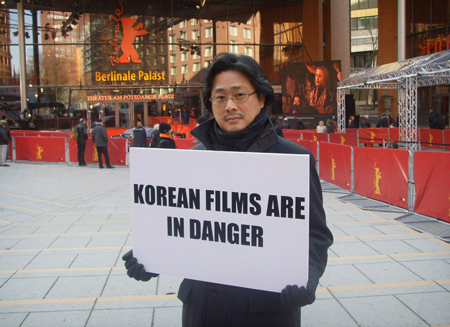Memo #390
By: Patrick Messerlin – patrick.messerlin [at] gmail.com and Jimmyn Parc – jimmynparc [at] gmail.com

 With the continued dominance of Hollywood films around the world, policy makers in Asia and elsewhere are increasingly considering government subsidies as a major fuel for strengthening their national film industries. However, the true effectiveness of subsidies on a film industry remains a debatable issue. Evidence based on the experiences of the South Korea and French film industries presents a mixed answer – there are good and bad subsidies.
With the continued dominance of Hollywood films around the world, policy makers in Asia and elsewhere are increasingly considering government subsidies as a major fuel for strengthening their national film industries. However, the true effectiveness of subsidies on a film industry remains a debatable issue. Evidence based on the experiences of the South Korea and French film industries presents a mixed answer – there are good and bad subsidies.
Comparing France and Korea makes sense due to many similarities: both see the prosperity of their respective cultural industries as an essential component toward maintaining their national identities. Their populations, box office market sizes, and admissions per person are similar. Furthermore, both countries have adopted exactly the same sequence of instruments when designing their film policies—import quotas, screen quotas, and then subsidies. Yet, they are very different in one key respect: France has implemented an intensive subsidy policy for its film industry since the 1950s, whereas Korea has granted very few subsidies to its film industry until very recently.
After more than half a century, these different subsidy policies have led to very different outcomes. The Korean film industry has, without significant government subsidies, prospered over the long term, more so than the heavily subsidized French film industry, with much stronger growth in particular over the last two decades. This has resulted in a larger overall film market, and a higher market share for Korean films in the domestic market. However, in France there is a clear trend of diminishing returns from subsidies with respect to revenues that raises questions about the sustainability of such a policy in the long run. The evidence suggests that French subsidies have had unintended negative consequences on the French film industry, such as decreasing domestic market share, that they were supposed to support, especially since the late-2000s.
This suggests the need to understand different types of subsidies and their impacts. Subsidies directed to infrastructure that foster competitiveness, rather than specific titles or firms, can promote internationalization and pro-competitive business strategies, as the South Korean case shows. Subsidies that protect domestic firms, or maintaining a status quo, as the French case indicates, tend to be less effective.
About the Authors:
Patrick Messerlin is Professor Emeritus at Sciences Po Paris and Director of Groupe d’Economie Mondiale (GEM).
Jimmyn Parc (Ph.D.) is a visiting lecturer at Sciences Po Paris and a research associate at the EU Center, Graduate School of International Studies, Seoul National University. He is also a researcher at Groupe d’Economie Mondiale (GEM).

Popular South Korean film director Park Chan-wook staging a one-person protest at the Berlin International Film Festival in 2006 when the Korean government was planning to cut the quota for Korean films in half. (Credit: SEGYE.com)

Protest in France against TAFTA, which among other things, many people fear it could interfere with areas related to culture and the audiovisual sector. (Credit: Patrick Le Hyaric)
Links
- Patrick Messerlin and Jimmyn Parc, “The Real Impact of Subsidies on the Film Industry (1970s–Present): Lessons from France and Korea,” Pacific Affairs 90, no. 1 (March 2017), forthcoming issue.
- Patrick Messerlin and Jimmyn Parc, “The Effect of Screen Quotas and Subsidy Regime on Cultural Industries: A Case Study of French and Korean Film Industries,” Journal of International Business and Economy 15, no 2 (2014): 57-73.
- Jimmyn Parc, “The Effects of Protection in Cultural Industries: The Case of the Korean Film Policies,” International Journal of Cultural Policy (January 2016), doi: 10.1080/10286632.2015.1116526, 13.
- Sean Pager, “Beyond Culture Vs. Commerce: Decentralizing Cultural Protection to Promote Diversity through Trade,” Northwestern Journal of International Law & Business, 31 (2011): 63–135.
- Michael Van Beek, “New Evidence: Film Incentives Still Don’t Work,” The Mackinac Center for Public Policy (June 27, 2016)
- The Economist, “French films: Subsidy wars” (Feb 24, 2005)
- Sylvain Charat, “Crony Capitalism Is the Norm in A French Film Industry Shielded From Free Markets,” Forbes (January 4, 2013)
- Reelrundown, “10 Things Korea Is Doing That’s Helping Their Entertainment Industry” (November 15, 2016)
Related Memos:
See our other memos on South Korea and France.